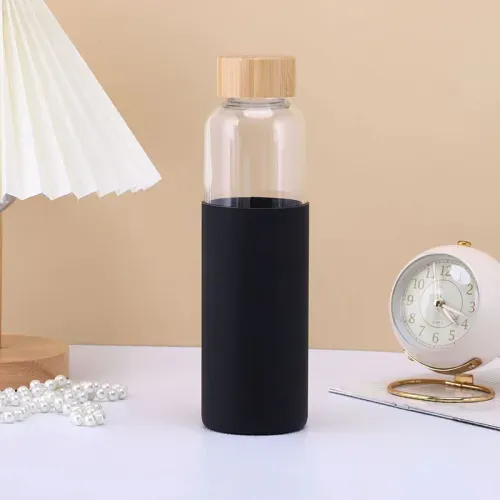 TEL: +86 311 67799298
TEL: +86 311 67799298 Email: tina@yintoglassware.com
Email: tina@yintoglassware.com
Choosing the Right Glass Pan Sizes for Your Cooking Needs and Recipes
Understanding Glass Pan Sizes A Comprehensive Guide
When it comes to baking or cooking, choosing the right pan is crucial to achieving the desired results. Among the various types of cookware available, glass pans have become increasingly popular due to their versatility and convenience. However, with numerous sizes and options on the market, it can be challenging to determine which glass pan size suits your needs best. This article aims to clarify the different glass pan sizes, their uses, and tips for getting the most from your glass cookware.
What Are Glass Pans?
Glass pans are kitchen tools made from tempered glass, known for their ability to withstand high temperatures and provide even heat distribution. They are used for a variety of cooking methods, including baking, roasting, and even serving. Glass cookware allows you to monitor the cooking process visually, eliminating the guesswork often associated with opaque metal pans.
Common Glass Pan Sizes
Glass pans come in an array of sizes, catering to different recipes and servings. Here are some common sizes and their typical uses
1. 8 x 8 inches This size is a staple in many kitchens, perfect for baking brownies, small casseroles, or dessert bars. Its square shape makes it easy to cut portions for serving.
2. 9 x 13 inches Perhaps the most popular glass pan size, the 9 x 13 inch pan is ideal for larger casseroles, lasagnas, and baked desserts like sheet cakes. It can hold substantial portions, making it perfect for family gatherings or potlucks.
3. Round pans Common round glass pan sizes include 9-inch and 10-inch. These are frequently used for cakes and other desserts, providing a classic shape for cakes, quiches, and tarts. A 9-inch round pan typically holds about 2 quarts of batter.
4. Loaf pans Glass loaf pans typically measure about 8.5 x 4.5 inches and are designed for quick breads, pound cakes, and meatloafs. They are perfect for making homestyle dishes that require uniform cooking.
5. Bakers dish Various baker dish sizes exist, commonly measured in quarts. A 2-quart baker dish is suitable for side dishes and smaller casseroles, while larger 4-quart and 5-quart dishes are perfect for family-sized meals.
glass pan sizes

Choosing the Right Size
Selecting the appropriate glass pan size is essential for achieving the right cooking results. Using a pan that is too small can cause spills in the oven, while a pan that is too large may lead to uneven cooking. Always refer to the recipe for specific pan size recommendations, as different sizes significantly impact cook time and texture.
When adapting recipes for different glass pan sizes, remember that increasing the surface area could lead to a quicker cooking time. Conversely, using a smaller pan may require a longer cook time. A general rule of thumb is to monitor your dish closely, checking for doneness earlier than stated in the recipe.
Tips for Using Glass Pans
1. Preheat the Oven Glass pans require an adequately preheated oven for even cooking. This helps to avoid temperature shocks that can crack the glass.
2. Avoid Extreme Temperature Changes Do not place a hot glass pan directly onto a cold surface or vice versa. Let it gradually adjust to the temperature changes to prevent breaking.
3. Grease Your Pan Although many glass pans are non-stick, greasing them can help to ensure easy release and cleanup.
4. Use Caution When Cutting If your recipe requires cutting in the pan, be cautious with metal utensils as they can scratch the glass. Opt for silicone or plastic utensils instead.
5. Clean with Care Glass pans are dishwasher safe, but handwashing with a soft sponge can help maintain their clarity and prevent scratching.
Conclusion
Glass pans offer an excellent option for home cooks due to their versatility, durability, and ease of use. Understanding the various glass pan sizes and their applications can help you make informed decisions in the kitchen. With proper care and attention to your recipes, glass pans can become invaluable tools in your culinary arsenal, elevating your cooking and baking experiences. Whether you’re preparing a small batch of brownies or a family-sized lasagna, the right glass pan will ensure your dishes turn out perfectly every time.
-
Unparalleled Convenience by High Borosilicate Glass Bottle with a Cork LidNewsJul.17,2025
-
The Versatility and Convenience of Glass Salad Bowl SetsNewsJul.17,2025
-
The Practical Wide Application of High Borosilicate Glass Food Storage ContainerNewsJul.17,2025
-
High Borosilicate Colored Glass Bowl VS Soda-Lime Glass and Tempered GlassNewsJul.17,2025
-
Creativity with Customized Colored Glass Dinnerware Sets for SaleNewsJul.17,2025
-
Advantages Analysis of Double Wall French PressNewsJul.17,2025









